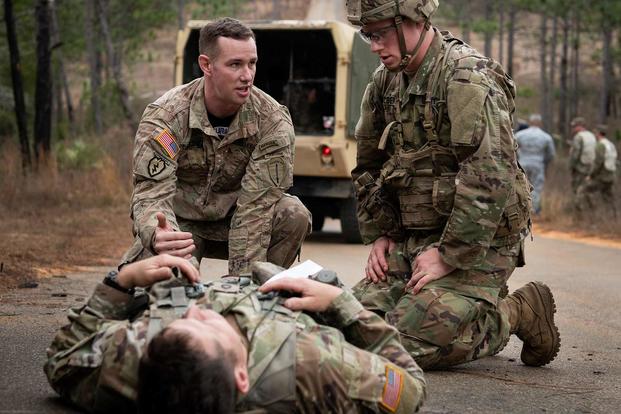The latest proposed bone regenerative therapy is a paint-like substance that coats implants or other devices to promote bone regrowth. It’s designed for use in treating combat injuries and lower back pain, among other issues.
After about $9 million in grants from the Departments of Defense and Veterans Affairs, the substance, called AMP2, made by the company Theradaptive, is moving onto the next trial phase, a step ahead of testing on humans. Creator Luis Alvarez, a retired Army lieutenant colonel who served a year in Iraq, said coating an implant is much better than the current, more dangerous therapy for bone regrowth.
"Without this product, the alternative is to use the type of protein that is liquid," Alvarez said. "And you can imagine if you try to squirt a liquid into a gap or a defect in the bone, you have no way of controlling where it goes."
This has caused bone regrowth in muscles and around the windpipe, which can compress a patient’s airway and nerves leading to the brain, he said.
Related: Tricare to Add 'Female Viagra' to Covered Drugs List
AMP2 is made out of that same protein that promotes bone or cartilage growth in the body, but it's sticky. It binds to a bolt or other device to be inserted into the break, potentially letting surgeons salvage limbs by reconstructing the broken, or even shattered, bone, Alvarez claims.
He said veterans could find the new product beneficial as it may be used in spinal fusions to treat back pain or restore stability to the spine by welding two or more vertebrae together. According to the American Academy of Orthopaedic Surgeons, the goal of this surgery is to have the vertebrae grow into a single bone, which is just what AMP2 is intended to facilitate.
Alvarez created his product after finding out halfway through his career that wounded soldiers he served with ultimately had limbs amputated because they couldn't regrow the tissue needed to make the limbs functional.
"To me, it felt like a tragedy that that would be the reason why you would lose a limb," he said. "So when I got back from Iraq, I went back to grad school and the motivation there, in part, was to see if I could develop something or work on the problem of how do you induce the body to regenerate tissue in specific places and with a lot of control?"
Alvarez, who graduated from MIT with a Ph.D. in Biological Engineering and a Master of Science in Chemical Engineering, said AMP2 has shown a lot of promise: A recent test showed bone regrowth that filled a two-inch gap. And its potential is not limited to combat injuries, he added.
"The DoD and the VA are actually getting a lot of leverage from their investment because you can treat not only trauma, but also aging-associated diseases like lower back pain," Alvarez said. "It's going to redefine how physicians practice regenerative medicine."
Editor's Note: This story has been updated to correct the name of the substance and clarify language regarding its potential use.
-- Dorothy Mills-Gregg can be reached at dorothy.mills-gregg@military.com. Follow her on Twitter at @DMillsGregg.
Read More: Navy Takes Major Step Toward Building Its Drone Ship Fleet













